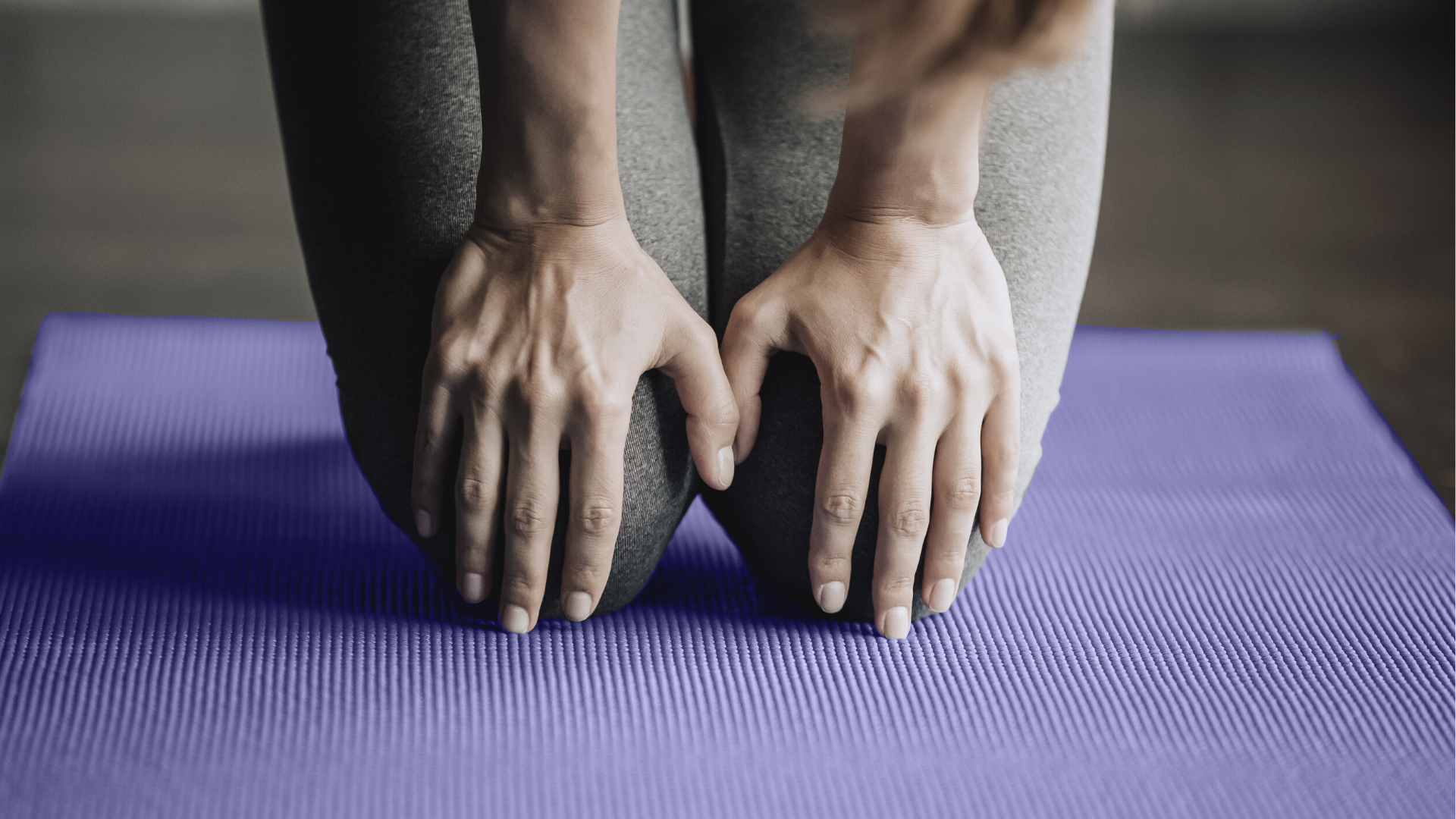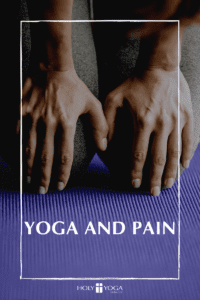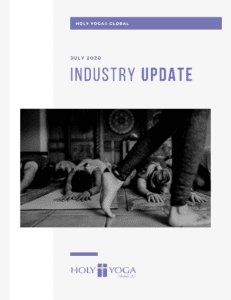
As much as we would love to think it, we yogis are not immune to pain. Sometimes the pain is evident during a practice, but it may also be felt in the hours or days that follow. So, what do you do when the pain surfaces? While it may be tempting to find a way to simply make it go away by numbing it out with whatever your go-to method of pain relief may be, it’s important to remember that pain is one way that our body communicates with us. Like a red traffic light, it gets our attention, warns us that we are headed for danger if we fail to change something (e.g. our speed), and makes us (if even for a moment) pause and consider our next move. Just as it would be unwise to ignore a red light at a busy intersection, pushing through pain in a yoga practice can have serious consequences. For this reason, it is important to pause and answer a few key questions when pain gets our attention.

When and where does it hurt?
This is not always as obvious as it might seem, especially if the pain is minor or surfaces after you’ve left the mat. Taking time to identify as precisely as possible where and when you feel pain will make the changes the body is asking for more evident. A common complaint among yogis, for example, is shoulder pain. This, of course, may appear in various locations under numerous circumstances, but quite frequently, many yogis will point to the front of their shoulder, near the joint when asked to identify where the pain is felt. In response to the question, “When do you feel it?” it is not uncommon to hear that such pain surfaces after a power, ashtanga, vinyasa or any type of yoga class in which arm balances such as plank and the commonly succeeding chaturanga (yoga push-up) are not only present, but frequently visited through the course of the class.
What is contributing to my pain?
Our example, anterior (front) shoulder pain, like many pains and injuries, does not discriminate. While the specific cause and onset of the pain may differ, beginners and advanced practitioners of all ages are likely to experience this type of shoulder pain during or after a practice at some point in their yoga journey.
Having identified the place and time(s) when the pain is felt, you can begin to dig deeper and analyze what is contributing to the conditions that create and/or exacerbate the pain. Only by doing so is it possible to make the changes that the body needs to reduce, or hopefully eliminate the risk of injury to the surrounding tissues. Although examining the body on the mat is an essential part of identifying why you are feeling the pain during a yoga practice, the demands placed upon the body the other 23 (or so) hours a day must also be taken into consideration. Unhealthy holding patterns and movement habits that are employed throughout our days are not magically shed once we step onto our mats! In the case of our shoulders, we bring our habit of hunching over a computer, steering wheel or cell phone with us to our practice. If such a pattern manifests in our planks and chaturangas, we can easily put undue stress on the tissues of the shoulder joint. When a greater load than these tissues are able to withstand has been imposed upon them, often due to misalignment, we trigger the body’s alarm system telling us to stop in order to avoid further damage.
So what?
Pain screams for change. When the questions above have been answered, you can start to make the changes necessary to avoid further injury. In our example of anterior shoulder pain that is exacerbated by habitually rounded shoulders that remain so during a class filled with planks and chatarungas, attention to the alignment of the shoulders will be a good place to begin. This may be easier said than done. One yogi may need to execute each chaturanga by consciously drawing the shoulders down and back, keeping the elbows hugged to the side body and reducing the bend in the elbows. While another yogi needs to develop body awareness, strength and/or flexibility necessary to do so. The latter will likely need to modify by dropping to the knees and/or skipping chaturangas altogether until the body is prepared to do them without risking injury. Both will likely need to make some postural and/or movement habit adjustments off the mat as well.
Taking it off the mat
As with everything we learn on our mats, there is an off-the-mat application when it comes to pain. Pain is not just something we feel in our physical bodies. We all have felt the sting of an emotional pain such as grief, sorrow or rejection, to name a few. These emotions hurt, but like physical pain, they serve as messengers to get our attention! Not unlike our shoulders’ cry for realignment, in our practice emotional pain highlights our need to check our alignment and relationship with our true selves, people around us and especially with Christ. The stabbing pain felt by the perceived rejection from a friend, for example, may reveal the presence of pride, the idol of people-pleasing or perhaps a canyon that has formed between oneself and God as the habit of steeping in His presence has diminished over time. When our eyes are opened to the source(s) of our pain, we are given a choice: we can cover it up and ignore it or do the hard work of realignment that ultimately ushers in physical emotional and spiritual health. May we wisely choose the latter as Paul encourages in his second letter to the Corinthians:
“Distress that drives us to God does that. It turns us around. It gets us back in the way of salvation. We never regret that kind of pain. But those who let distress drive them away from God are full of regrets, end up on a deathbed of regrets.”
2 Corinthians 7:10 MSG
To learn more about how to reduce pain and incorporate yoga into your daily life, check out our upcoming workshop, Yoga at Your Desk!

Did you enjoy this post? This article is from this July’s Holy Yoga Global Quarterly Industry Update. We provide industry knowledge to all of our Holy Yoga Instructors that are Core Members. Learn more about the Core membership here!
